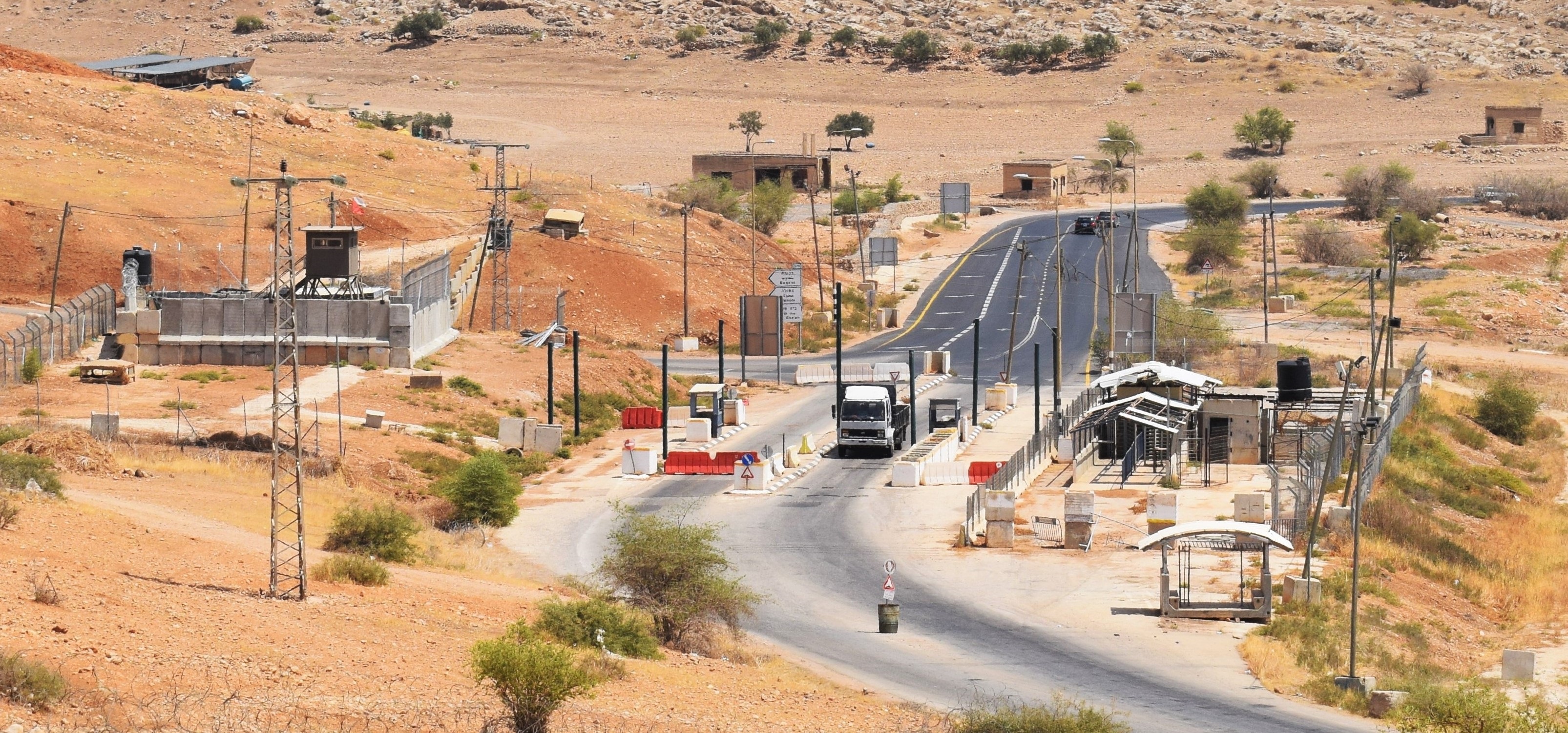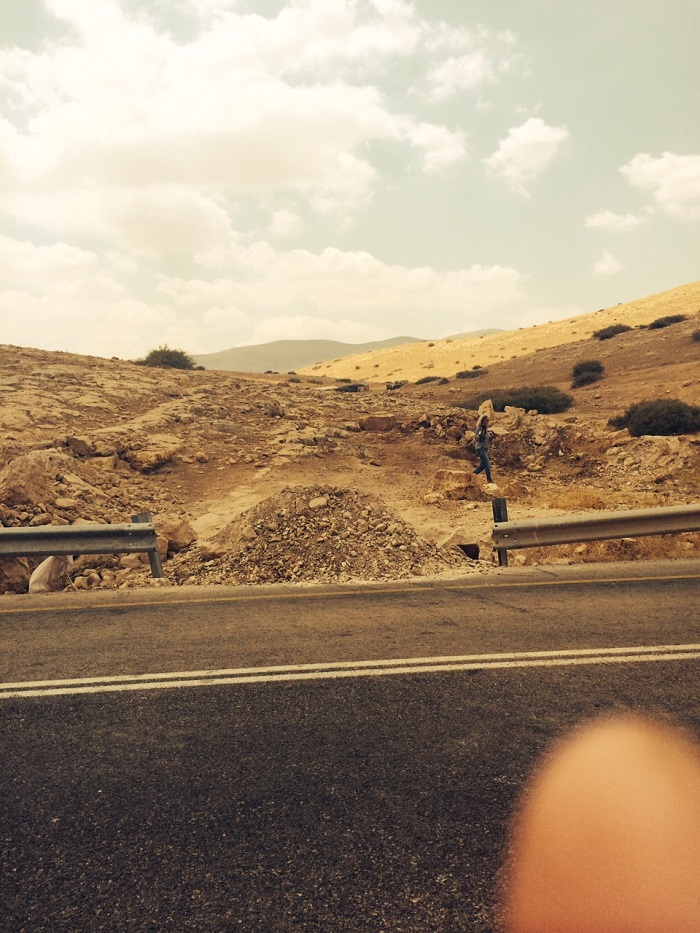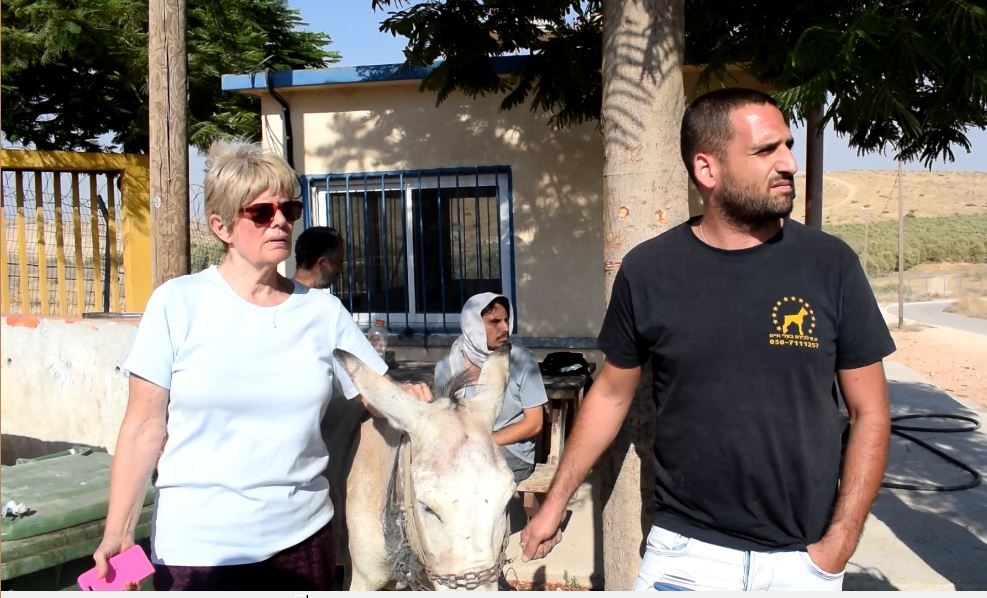Palestinian Jordan Valley

8:45 – Za’atara Junction Checkpoint. Soldiers man the hitchhiker’s station and car park, the checkpoint is open to traffic.
Migdalim settlement – vast construction activity is seen at this settlement. We were told that this also takes place on private Palestinian property, and the Palestinians demonstrate in protest and here and there manage to stop the bulldozers.
Fassail – there were no men present at the village except for Omar. Since the last demolition nearly nothing has been rebuilt. Combatants for Peace have brought metal rods but these are still lying on the ground. Only a kitchen tent has been raised. The pile of belongings has been removed.
We stopped for a drink of water at the faucets fixed in the wall around one of the houses at the entrance to the village. It is a commemorative corner for a late grandfather, where cold water and dates are offered to any passerby.
Hamra Checkpoint

unmanned, But just to the Palestinians don’t feel they’d been forgotten, that they keep in mind they are under occupation and thus they may be harassed, even in minor ways, without any grounds whatsoever, at the checkpoint one lane has been blocked at two different spots. All traffic now moves on a single lane and it’s a miracle whenever two cars arrive from opposite directions and don’t run into each other. In the past we used to hear that the second lane is closed because of lack of manpower. And now? When this checkpoint is unmanned?? What is the excuse for jeopardizing human lives this way?
A bulldozer raises higher the criminal dirt piles that separate the Jordan Valley from the hilly center of the West Bank, villages and shepherds communities from schools, clinics, hospitals, shopping centers and livelihoods. We asked the officer in charge, “Why?” And he promptly answered, “To prevent terrorist attacks”. “When have there ever been any terrorist attacks around here?” we asked. The officer triumphed: “There aren’t any because of these barricades”. We insisted: “But after all these barricades can be bypassed on foot by terrorist attackers…” Here he got confused, turned around and left.

el Macsar (photo: Daphne)
And another vile crime: the only entrance into Al Makassar village has been blocked. It is hardly a meter and a half wide. One can reach the village by detour, from Nablus, but this is a huge detour and the livestock and water tankers have remained on the other side of the barricade, because that is where the village’s grazing grounds lie. And how can water now be carried into the village? And how will the tractor reach the fields? Who cares… After all, the point is to expel everyone into Area A, into the crowded, unemployment-infested towns, and then the Jordan Valley will belong to us, Jewish Israelis.
At 2 p.m. we received an alarming telephone call from the Daragma family, living at the junction near Maskiyot settlement. Here’s the story: A small gray and white donkey was grazing near the Allon Road, below Maskiyot. Its mistress who lives at the next junction was watching over it and over the sheep that grazed nearby. Policeman Nissim Wakneen passed by, perhaps summoned by the settlers who cannot stand Palestinians grazing their flocks in the area, and immediately arrested… the donkey, tied it with a rope to his back bumper, and began to drive up the steep road to Maskiyot. The donkey could hardly walk this way and dragged itself until… the rope tore. But Wakneen, resourceful as he is, would not give up. He tied the poor donkey to the car door handle with the remains of the rope, and continued dragging it up the road. Only when Taayush activists arrived on site with their cameras did the policeman stop by the roadside, and after some talk, got out of his car, shouldered his weapon, and continued on foot into the settlement, as we accompanied him (and the donkey).

We entered the settlement (the shepherdess’ son remained outside in the sun, waiting for his donkey), the donkey was tied to a tree, and began waiting. We waited for three hours. The policeman was replaced after an hour and a half by some questionable young fellow who claimed to be a (plainclothes) policeman but refused to identify himself or show any ID, and sat inside a white civilian vehicle with darkened windows. Another 8 soldiers were summoned and joined the two at the settlement gate. All these security forces secured the State of Israel from a small gray-white donkey who stood quietly, its eyes sad and its back wounded from the bite of another donkey. The donkey did not resist the trek up the road nor the long wait (3 hours). It stood there waiting with its typical donkey patience, until the “donkey catcher” who was summoned to the spot began to force the donkey into his transport vehicle. Then the donkey knelt to the ground and began kicking and biting and baying… I never used to like donkeys. They were always a part of the landscape for me, nothing more. But here I must confess: during those three hours we waited with it, I fell in love… I cannot get its image, the lowered head and sad eyes, out of my mind. The unidentified “policeman” and the donkey catcher refused to hand to the owner any kind of document explaining the reason for this confiscation or anything that proves that this possession has been taken. At the most, they said, “The owner should come to me and then I’ll give him a paper” but the policeman was inside the settlement and the Palestinian is not allowed to enter, and the “policeman” refused to approach the Palestinian.
So how will the Palestinian get his donkey back?
Will he?
In this video, the farce which we witnessed during our shift:
Finally, on our way home around 7:30 p.m., we passed by a ploughed field across the road from Mekhora settlement. A tractor was driving among the plastic-covered beds. As we wondered about such early planting, we nearly ran into a skull-capped toddler who looked no older than 4 years of age, sitting on the yellow stripe along the roadside, and waving at us in greeting. He sat there alone, unwatched. He seemed to belong to the tractor driver. Sitting there he was no taller than about 40 cm. and at this dusk hour we hardly saw him, and luckily did not hurt him. And his father doesn’t care??
